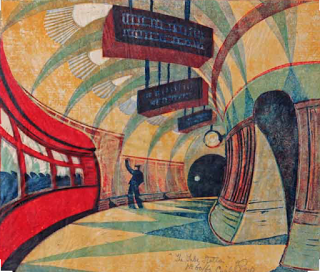We have often stated that the market move in two modes or regimes, divergence and convergence. Another way to describe this market behavior is through momentum and mean-reversion. Yet, these regimes should not be viewed as independent. They can actually be negatively correlated, but because they have different time horizons, they can co-exist. An older paper looks at combining these two strategies with global equity returns and finds that a combination can lead to excess returns. (See Balvers and Wu in “Momentum and Mean Reversion Across National Equity Markets”.)
They form one indicator or model which tries to combine momentum and mean-reversion using a permanent and transitory model framework. The basis for their model is that momentum effects are relatively short-lived (under a year) while mean reversion may occur over longer periods (in some cases 3-5 years). Different time frames that can be modeled through transitory and permanent shocks can be unified in one model. Under this framework, momentum provides the foundation for mean reversion. Divergent events create the chance or opportunity for mean-reversion. Put differently, momentum will cause or increase the likelihood for a reversal in prices. Using these two concepts together, the researchers are able to generate consistent excess returns that are greater than a random walk or models that just look at momentum or mean-reversion in isolation. These two strategies are actually negatively correlated, so they are truly unrelated and unique. There is room for both these strategies but even better returns are generated when they are coupled together.
This is a paper that could have been written more clearly, but the conclusions are strong. Looking for and using momentum and mean reversion can both be employed to generate excess returns. The momentum investor should always be considering mean reversion as momentum extends through time, and the mean reversion investor should realize that momentum starts prices on the road to reversal.

